Botswana a country that’s only slightly larger than France, but an impressive 40 percent of Botswana´s land has been set aside for wildlife conservation.
Its other claim to fame is that it is also home to the world´s largest population of elephants.
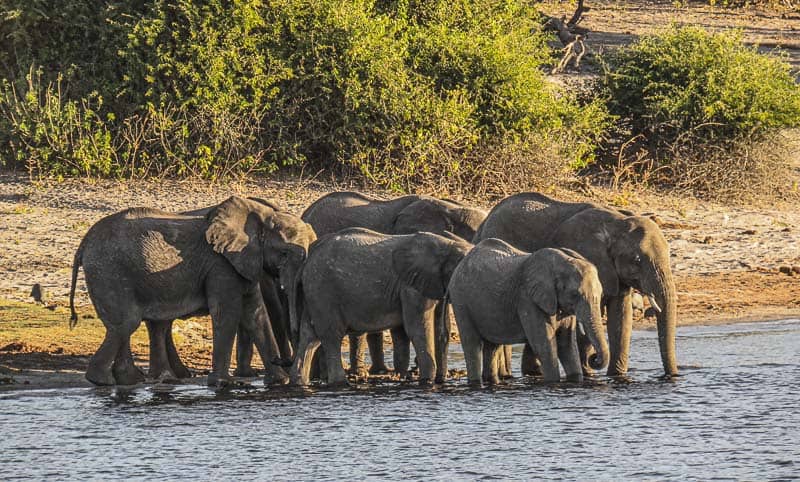
An estimated 130,000 African Elephants inhabit the various national parks (four National parks and nine protected areas) and private game reserves in Botswana, a landlocked country in the Southern part of Africa, bordering Namibia, South Africa, Zambia & Zimbabwe.
The animals are not constrained by political boundaries and move freely between the neighboring countries.
The African elephant is the largest animal that walks the earth. Herds of these majestic giants roam through 38 of 54 countries in Africa and the Asian elephant through 13 countries in Asia.
Reaching up to 3.2–4 m 10–13 ft feet in height and 7 tons in weight, the highly intelligent herbivores can live for 70 years. Interestingly, their ears are shaped like the African continent and radiate heat to keep them cool.
Their most characteristic feature, however, is the trunk, which is a long nose that the animals use to smell, breathe, trumpet, drink, and grab things. Both male and female African elephants have tusks.
Unfortunately, the ivory of the elephant tusk is prized by humans, and although its trade is illegal, the African elephant is still an endangered species.
Botswana which is home to a third of all elephants in Africa did In 2014 make a law banning the killing of Elephants, and the country got recognized all over the world for their fight against poaching and the killings of Elephants, but unfortunately, did The Government of Botswana remove the law to protect Elephants in May 2019 again, much to the disappointment of conservationists and animal lovers all over the world.
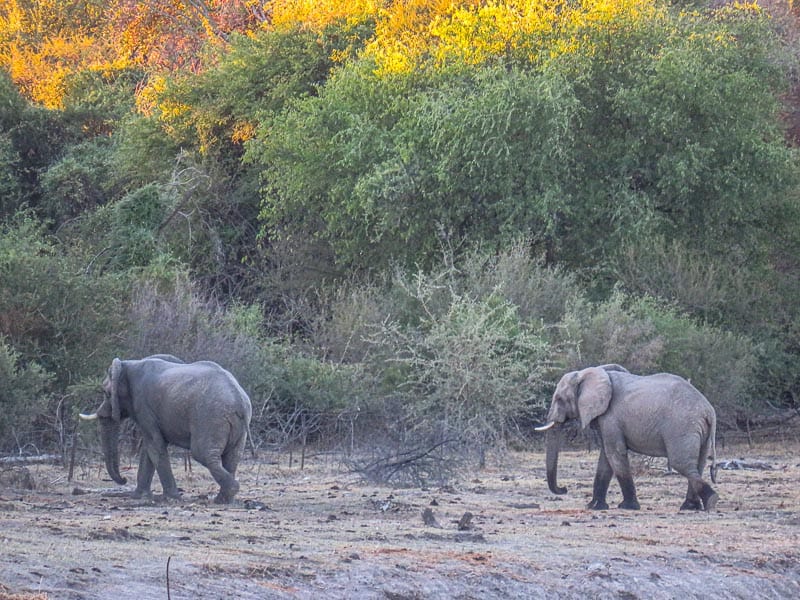
Claiming they needed to control the elephant population due to increasing human-elephant conflicts.
It will definitely damage the country’s international reputation for conservation and affect its revenues from tourism, the second-largest source of foreign income after diamond mining.
If you are planning to visit Botswana, so are these the top 3 places in Botswana where you can experience close encounters with the African elephant:
Chobe National Park.
Located in the northwest part of the country, Chobe National Park is Botswana’s third-largest national park in the country with one of the densest concentrations of wild animals anywhere in Africa.
Declared a national park in 1967, it occupies an area of nearly 12,000 square kilometres.
The gateway to the park is the small town of Kasane, near Botswana’s borders with Namibia, Zambia, and Zimbabwe.
Its location next to the Chobe River makes it one of the most picturesque national parks on the continent.
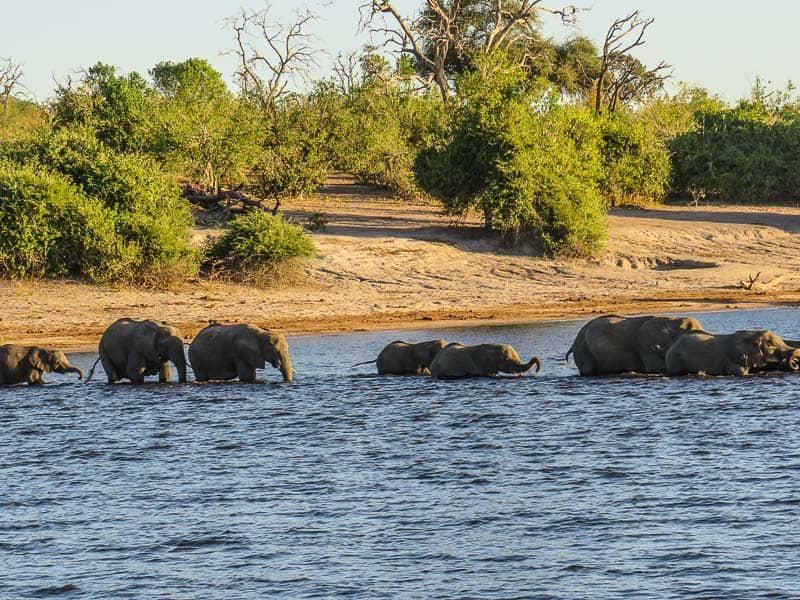
When you go on safari in Chobe National Park, one thing is assured – you will see elephants.
The park is believed to have the largest population of wild elephants anywhere in the world, estimated to be around 50,000.
Large herds of these animals can be found wandering the park and the neighboring Caprivi Strip in Namibia.
A herd is typically led by an older female or matriarch and consists of related elephants and their offspring. Sometimes, several families join to form massive herds consisting of hundreds of elephants.
Male elephants often wander around alone or form small groups.
Chobe can be accessed both by 4×4 vehicles and boats. A river safari on the Chobe River gives a unique perspective and a chance to watch the elephants on the water’s edge.
If you’re lucky, you might even see them crossing the river, in single file, with babies holding on to their mothers’ tails, a heartwarming sight if there ever was one.
During the dry winter season (June to October), huge numbers of elephants congregate on the riverfront, drinking, swimming, and playing.
In addition to elephants, are Chobe National Park home to an array of wildlife including lions, cheetahs, giraffe, leopards, buffalos, hippos, crocodiles, and antelope.
There are several private lodges and tented camps in the park, all of which are unfenced, allowing animals to move freely through. Chobe prides itself on eco-tourism, and a wildlife safari here is one of the most authentic experiences you can have anywhere in Africa.
Chobe National Park is one of the cheapest places on Africa to go on safari and is a popular destination to visit on a two-day trip from Neighboring Zambia and Livingstone, home to the largest waterfall in Africa, the Victoria Falls.
All hotels and hostels around Livingstone can arrange budget trips to Chobe.
Okavango Delta.
Called Africa’s Last Eden, the Okavango Delta is a unique ecosystem and one of the world’s largest inland deltas.
It is created by the Okavango River flowing 1600km/994miles from the Angolan Highlands through Namibia and Etosha National Park to the parched Kalahari Desert in Botswana.
The delta supports a large concentration of birds and animals.
It is, arguably, one of the best places to see wildlife in Africa, but also one of the more pricy ones. In June 2014, the Okavango Delta became the 1000th site to be officially inscribed on the UNESCO World Heritage List.
This pulsating wetland covers an area of 6,000 to 15,000 square kilometres in northern Botswana, depending on seasonal flooding, which typically peaks in July.
The flat, dry land of the Okavango consists of hundreds of small islands separated by narrow channels of water.
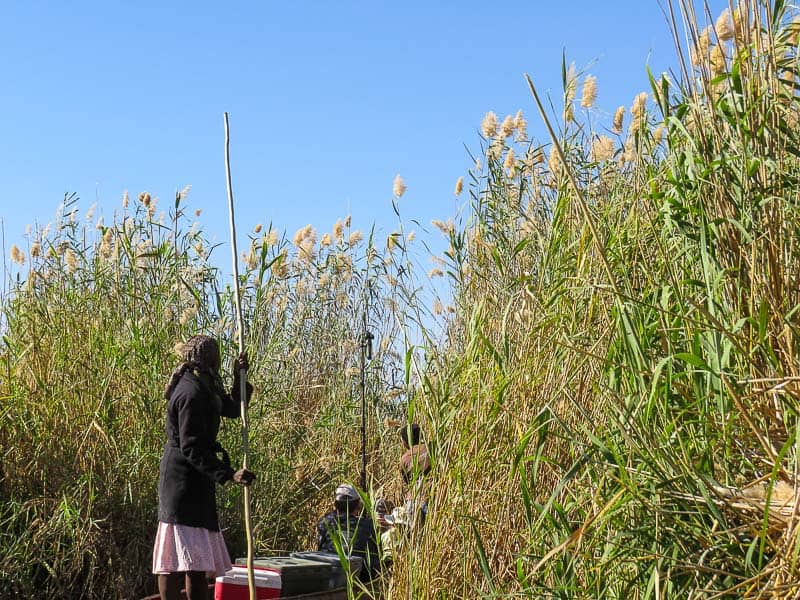
Thousands of African elephants are drawn like magnets to the delta, following ancient migratory routes to areas with permanent water and fresh food, which is plentiful in the Okavango as well as the nearby Moremi Game Reserve.
Some small bachelor herds are year-round residents of the swamps and join the larger herds of migrant females in the mating season.
The Okavango Delta is also inhabited by a myriad other species, such as hippos, white & black rhinos, wildebeest, wild buffalos, giraffe, kudu, zebra, hyenas, lions, cheetahs and the Nile crocodile.
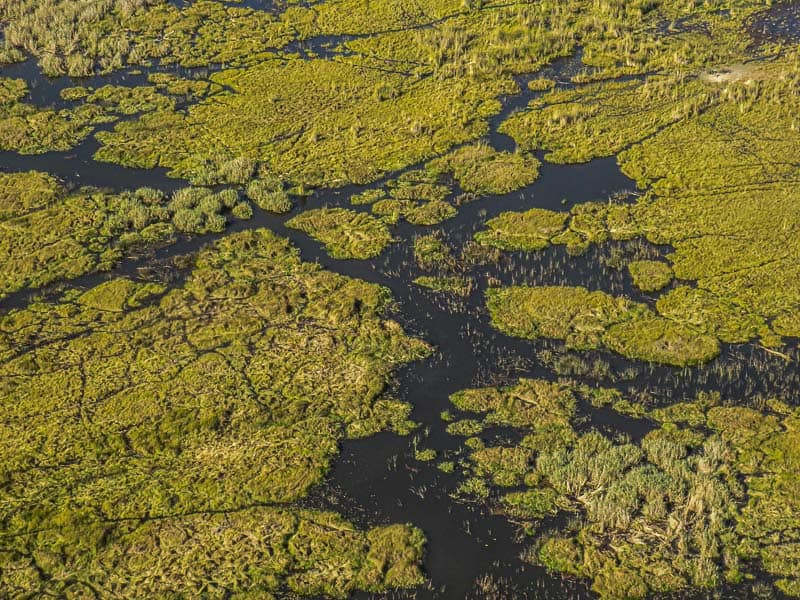
The best way to see the Okavango is by mokoro, a traditional dug-out canoe that is used to navigate the shallow waters of the delta.
The oarsman, called a poler, balances precariously on the stern and pushes the boat along with the help of a pole.
Although the wobbly mokoros can seem a little terrifying at first, this is an absolute must-do in the Okavango Delta.
There’s also the chance to take a scenic flight in a single-engine Cessna for a bird’s eye view.
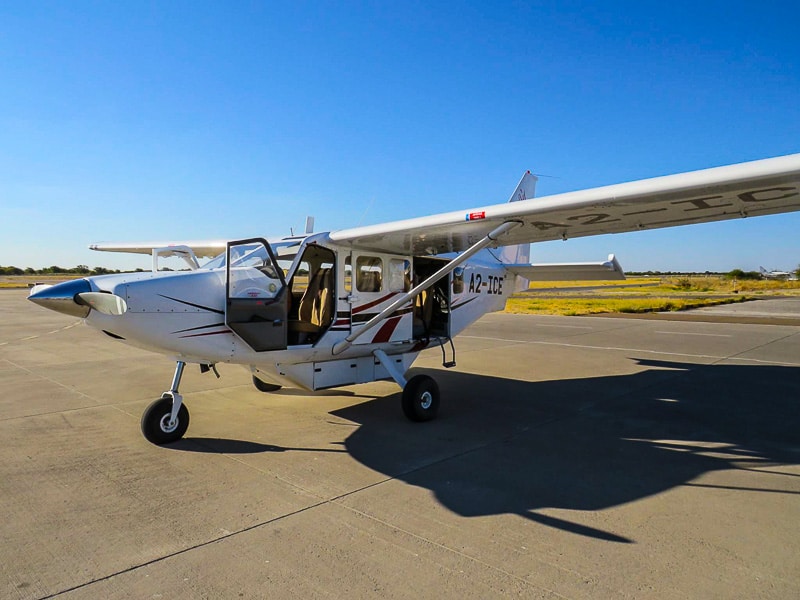
The size of the small aeroplane may give you butterflies in your stomach at first, but the flight is surprisingly smooth.
It’s fascinating to see the scale of the delta and the giant elephants looking no bigger than ants from 500 feet in the air.
Accommodation on the Okavango Delta consists of either water-focused or land-focused camps.
In the former, the emphasis is on walking safaris, motorboat excursions, and mokoro rides. At the latter, the safaris are typically 4×4 vehicle based, although some private concessions permit walking tours.
The Okavango Delta is accessible by both road and air.
The nearest town is Maun. Many private safari camps have airstrips with flights from Maun or Kasane Airports.
Elephant Sands.
This bush lodge and campsite in northeastern Botswana has a natural waterhole right in front of the reception. Guests have the unique experience of observing African elephants from less than 2m/6 feet away.
There are no fences, and the animals roam freely throughout the lodge.
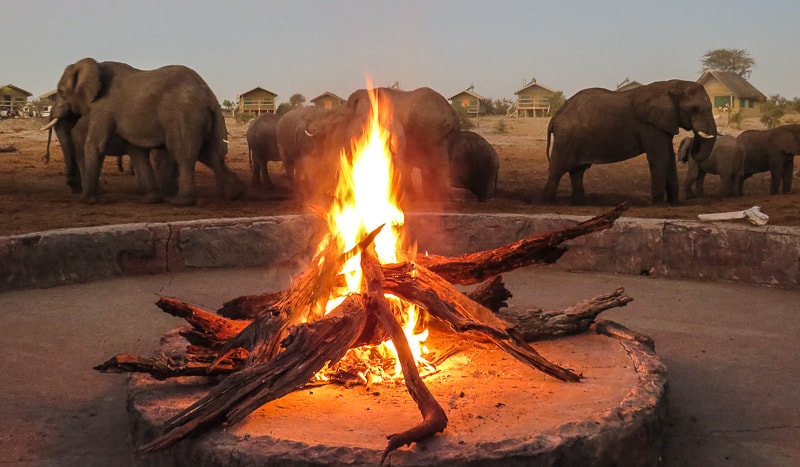
Staff is on hand to advise on safety rules and provide interesting information about these wondrous animals.
Whether you pitch a tent or stay in a chalet with en suite facilities for a bit of luxury, one thing’s for sure; you can’t get closer to these magnificent creatures.
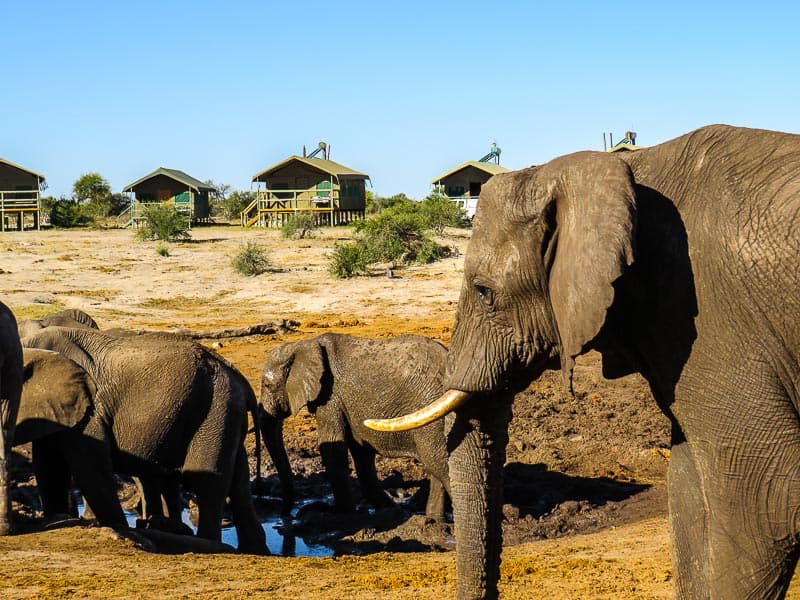
You’ll find yourself drawn to the watering hole and sitting there for hours. The elephants are constant entertainment, arguing with loud trumpeting and chasing each other in fits of rage.
This is the ideal place to get yourself a drink from the bar, sit back, and soak in the exhilarating atmosphere.
Elephant Sands is located on the Nata-Kasane Road, 53 km north of Nata.
The nearest international airport is Victoria Falls, Zimbabwe, which is about 185 km away.
Elephants are some of the most beloved and fascinating animals on earth, and Botswana is where these awe-inspiring creatures roam wild and free.
If you are an elephant lover or a wildlife enthusiast in general, Botswana should be on top of your bucket list.
Like It? Share It! Pin It!
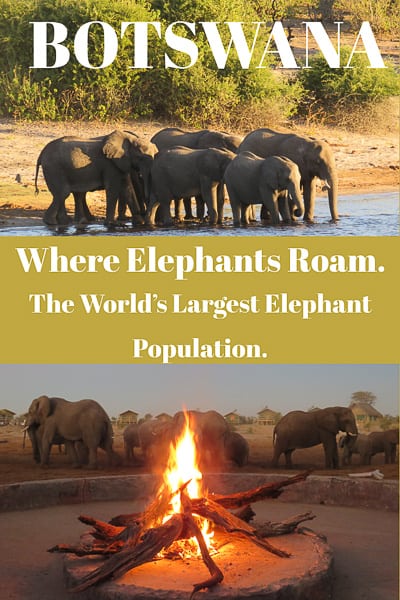

Leah Rachael
Friday 1st of November 2019
My dad used to take me elephant hunting in Botswana and I can't wait until they open the hunting back up so I can take my kids.